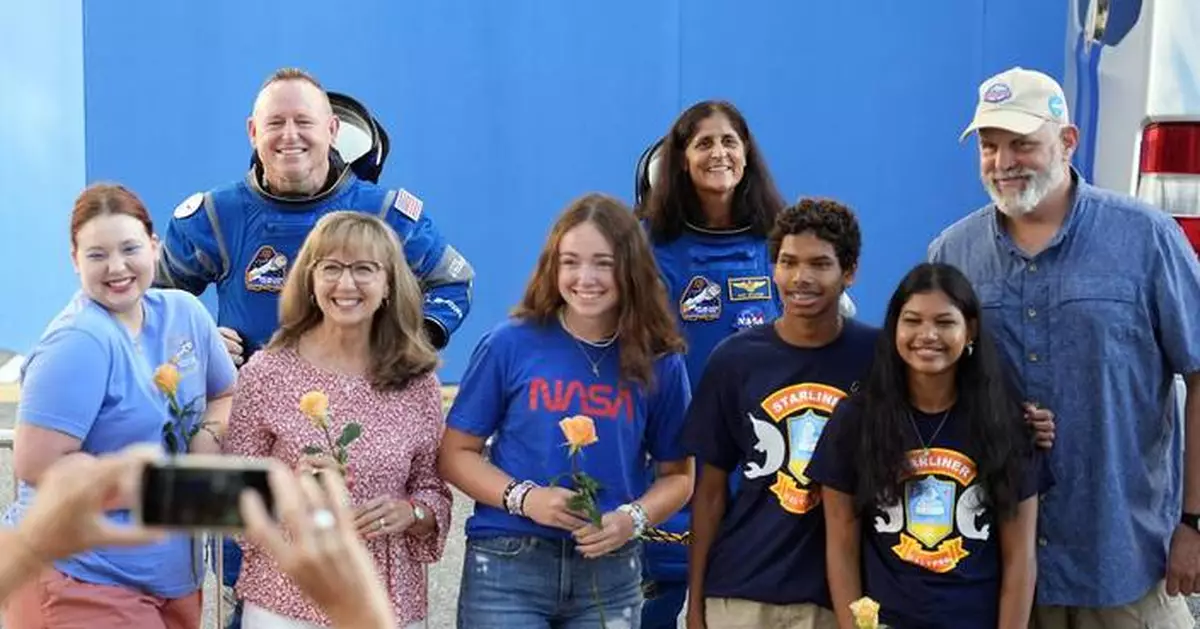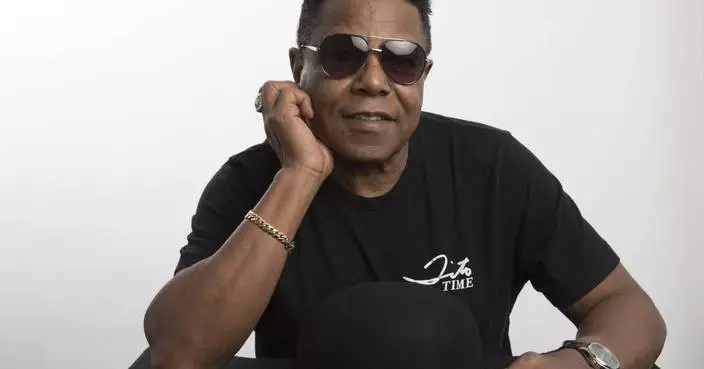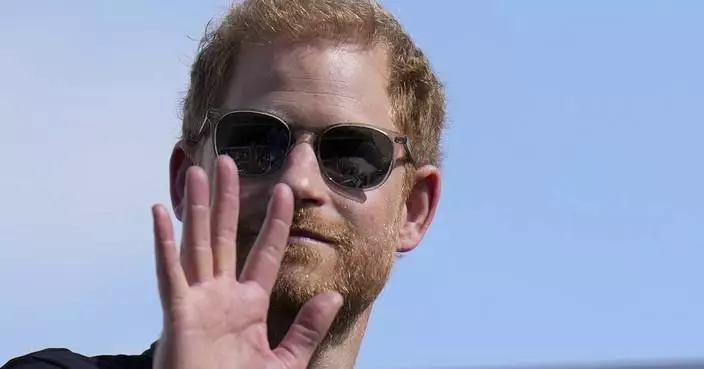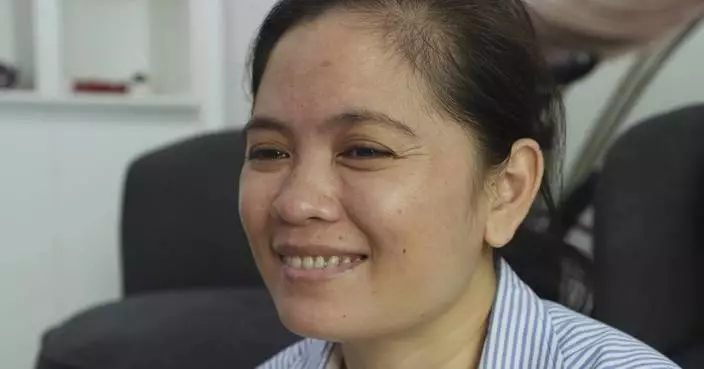CAPE CANAVERAL, Fla. (AP) — The two astronauts who will spend extra time at the International Space Station are Navy test pilots who have ridden out long missions before.
Astronauts Butch Wilmore and Suni Williams have been holed up at the space station with seven others since the beginning of June, awaiting a verdict on how — and when — they would return to Earth.
NASA decided Saturday they won't be flying back in their troubled Boeing capsule, but will wait for a ride with SpaceX in late February, pushing their mission to more than eight months. Their original itinerary on the test flight was eight days.
Wilmore, 61, grew up in Mount Juliet, Tennessee, playing football for his high school team and later Tennessee Technological University. He joined the Navy, becoming a test pilot and racking up more than 8,000 hours of flying time and 663 aircraft carrier landings. He flew combat missions during the first Gulf War in 1991 and was serving as a flight test instructor when NASA chose him as an astronaut in 2000.
Wilmore flew to the International Space Station in 2009 as the pilot of shuttle Atlantis, delivering tons of replacement parts. Five years later, he moved into the orbiting lab for six months, launching on a Russian Soyuz from Kazakhstan and conducting four spacewalks.
Married with two daughters, Wilmore serves as an elder at his Houston-area Baptist church. He’s participated in prayer services with the congregation while in orbit.
His family is used to the uncertainty and stress of his profession. He met wife Deanna amid Navy deployments, and their daughters were born in Houston, astronauts’ home base.
“This is all they know,” Wilmore said before the flight.
Williams, 58, is the first woman to serve as a test pilot for a new spacecraft. She grew up in Needham, Massachusetts, the youngest of three born to an Indian-born brain researcher and a Slovene American health care worker. She assumed she’d go into science like them and considered becoming a veterinarian. But she ended up at the Naval Academy, itching to fly, and served in a Navy helicopter squadron overseas during the military buildup for the Gulf War.
NASA chose her as an astronaut in 1998. Because of her own diverse background, she jumped at the chance to go to Russia to help behind the scenes with the still new International Space Station. In 2006, she flew up aboard shuttle Discovery for her own lengthy mission. She had to stay longer than planned — 6 1/2 months — after her ride home, Atlantis, suffered hail damage at the Florida pad. She returned to the space station in 2012, this time serving as its commander.
She performed seven spacewalks during her two missions and even ran the Boston Marathon on a station treadmill and competed in a triathlon, substituting an exercise machine for the swimming event.
Husband Michael Williams, a retired U.S. marshal and former Naval aviator, is tending to their dogs back home in Houston. Her widowed mother is the one who frets.
“I’m her baby daughter so I think she’s always worried," Williams said before launching.
The Associated Press Health and Science Department receives support from the Howard Hughes Medical Institute’s Science and Educational Media Group. The AP is solely responsible for all content.

In this photo provided by NASA, astronauts Butch Wilmore, left, and Suni Williams inspect safety hardware aboard the International Space Station on Aug. 9, 2024. (NASA via AP)
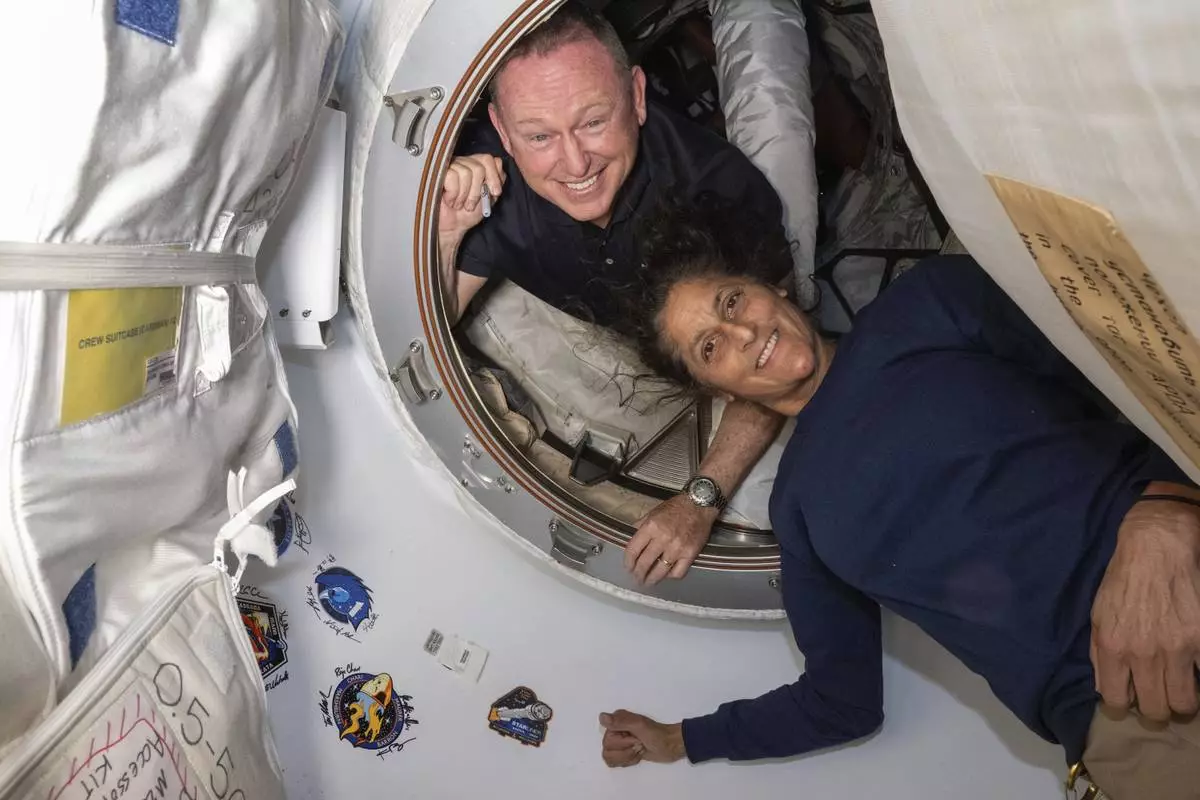
FILE - In this photo provided by NASA, Boeing Crew Flight Test astronauts Butch Wilmore, left, and Suni Williams pose for a portrait inside the vestibule between the forward port on the International Space Station's Harmony module and Boeing's Starliner spacecraft on June 13, 2024. (NASA via AP, File)
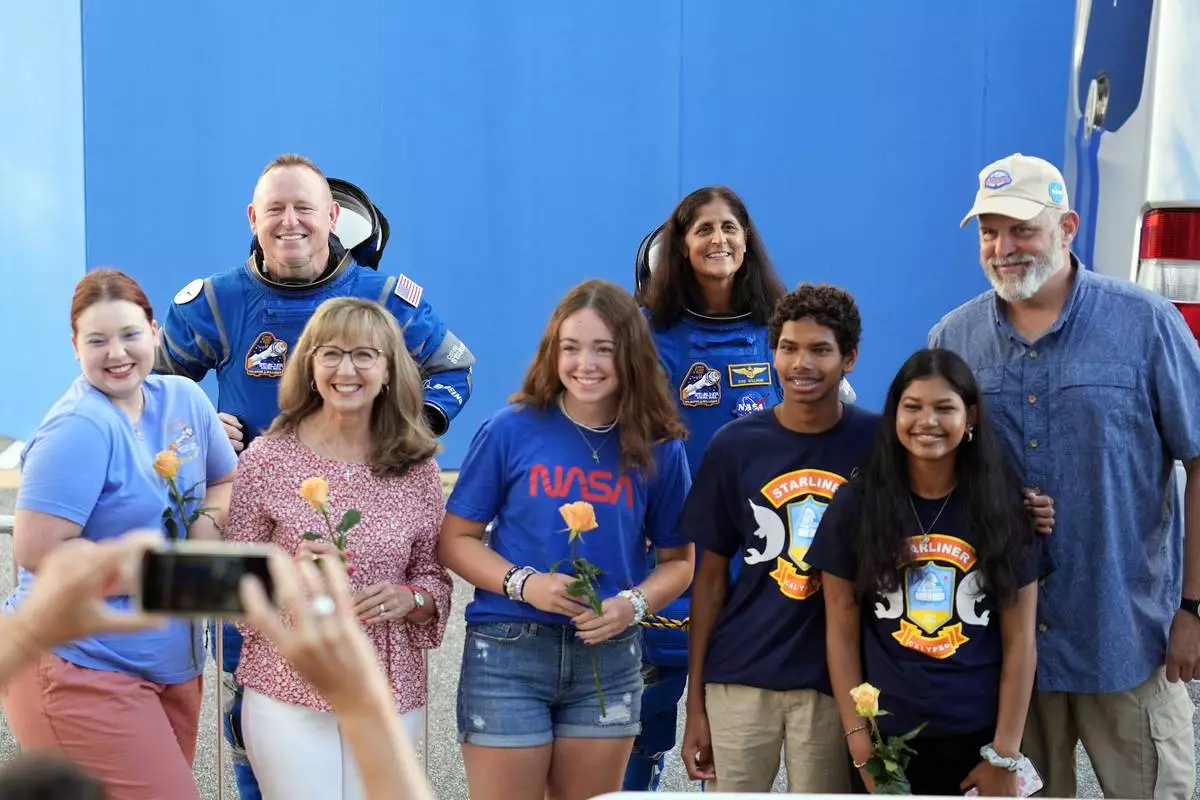
FILE - NASA astronauts Butch Wilmore, background left, and Suni Williams, background right, pose for a photo with their families after leaving the operations and checkout building for a trip to launch pad at Space Launch Complex 41 Wednesday, June 5, 2024, in Cape Canaveral, Fla., before launching on the Boeing Starliner capsule for a trip to the international space station. (AP Photo/Chris O'Meara, File)
WELLINGTON, New Zealand (AP) — It's noisy, smelly, shy — and New Zealand’s bird of the year.
The hoiho, or yellow-eyed penguin, won the country’s fiercely fought avian election on Monday, offering hope to supporters of the endangered bird that recognition from its victory might prompt a revival of the species.
It followed a campaign for the annual Bird of the Year vote that was without the foreign interference scandals and cheating controversies of past polls. Instead, campaigners in the long-running contest sought votes in the usual ways — launching meme wars, seeking celebrity endorsements and even getting tattoos to prove their loyalty.
More than 50,000 people voted in the poll, 300,000 fewer than last year, when British late night host John Oliver drove a humorous campaign for the pūteketeke -- a “deeply weird bird” which eats and vomits its own feathers – securing a landslide win.
This year, the number of votes cast represented 10% of the population of New Zealand — a country where nature is never far away and where a love of native birds is instilled in citizens from childhood.
“Birds are our heart and soul,” said Emma Rawson, who campaigned for the fourth-placed ruru, a small brown owl with a melancholic call. New Zealand's only native mammals are bats and marine species, putting the spotlight on its birds, which are beloved — and often rare.
This year's victor, the hoiho — its name means “noise shouter” in the Māori language — is a shy bird thought to be the world's rarest penguin. Only found on New Zealand's South and Chatham islands — and on subantarctic islands south of the country — numbers have dropped perilously by 78% in the past 15 years.
“This spotlight couldn’t have come at a better time. This iconic penguin is disappearing from mainland Aotearoa before our eyes,” Nicola Toki, chief executive of Forest & Bird — the organization that runs the poll — said in a press release, using the Māori name for New Zealand. Despite intensive conservation efforts on land, she said, the birds drown in nets and sea and can't find enough food.
“The campaign has raised awareness, but what we really hope is that it brings tangible support,” said Charlie Buchan, campaign manager for the hoiho. But while the bird is struggling, it attracted a star billing in the poll: celebrity endorsements flew in from English zoologist Jane Goodall, host of the Amazing Race Phil Keoghan, and two former New Zealand prime ministers.
Aspiring bird campaign managers — this year ranging from power companies to high school students — submit applications to Forest & Bird for the posts. The hoiho bid was run by a collective of wildlife groups, a museum, a brewery and a rugby team in the city of Dunedin, where the bird is found on mainland New Zealand, making it the highest-powered campaign of the 2024 vote.
“I do feel like we were the scrappy underdog,” said Emily Bull, a spokesperson for the runner-up campaign, for the karure — a small, “goth” black robin only found on New Zealand’s Chatham Island.
The karure's bid was directed by the students’ association at Victoria University of Wellington, prompting a fierce skirmish on the college campus when the student magazine staged an opposing campaign for the kororā, or little blue penguin.
The rivalry provoked a meme war and students in bird costumes. Several people got tattoos. When the magazine’s campaign secured endorsements of the city council and local zoo, Bull despaired for the black robin's bid.
But the karure — which has performed a real-life comeback since the 1980s, with conservation efforts increasing the species from five birds to 250 — took second place overall.
This weekend as Rawson wrapped up her campaign for the ruru, she took her efforts directly to the people, courting votes at a local dog park. The veteran campaign manager who has directed the bids for other birds in past years was rewarded by the ruru placing fourth in the poll, her best ever result.
“I have not been in human political campaigning before,” said Rawson, who is drawn to the competition because of the funds and awareness it generates. The campaign struck a more sedate tone this year, she added.
“There’s been no international interference, even though that was actually a lot of fun,” she said, referring to Oliver’s high-profile campaign.
It was not the only controversy the election has seen. While anyone in the world can vote, Forest & Bird now requires electors to verify their ballots after foreign interference plagued the contest before. In 2018, Australian pranksters cast hundreds of fraudulent votes in favor of the shag.
The following year, Forest & Bird was forced to clarify that a flurry of votes from Russia appeared to be from legitimate bird-lovers.
While campaigns are fiercely competitive, managers described tactics more akin to pro wrestling — in which fights are scripted — than divisive political contests.
“Sometimes people want to make posts that are kind of like beefy with you and they’ll always message you and be like, hey, is it okay if I post this?” Bull said. “There is a really sweet community. It's really wholesome.”
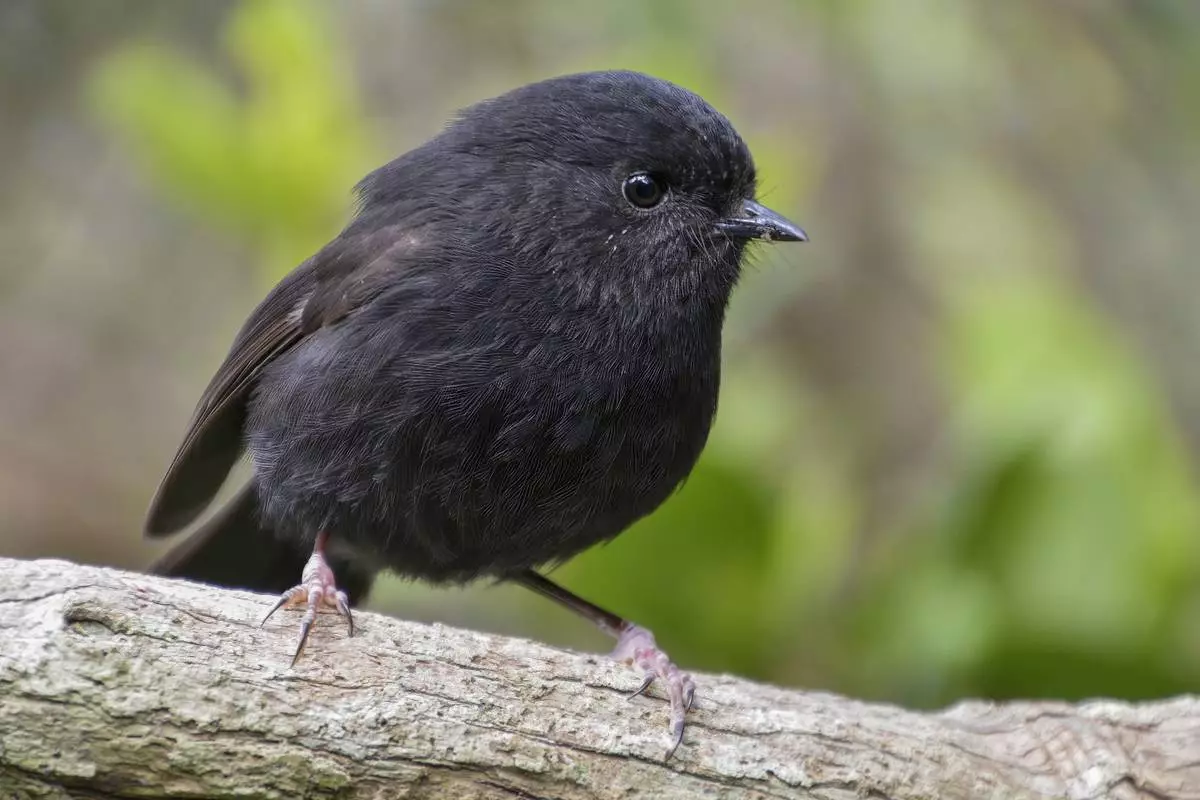
A karure, or Chatham Islands black robin pictured on Chatham Island in Sept. 2016 is runner-up to a hoiho or yellow-eyed penguin in the New Zealand Bird of the Year competition, announced Monday, Sept. 16, 2024. (Oscar Thomas via AP)
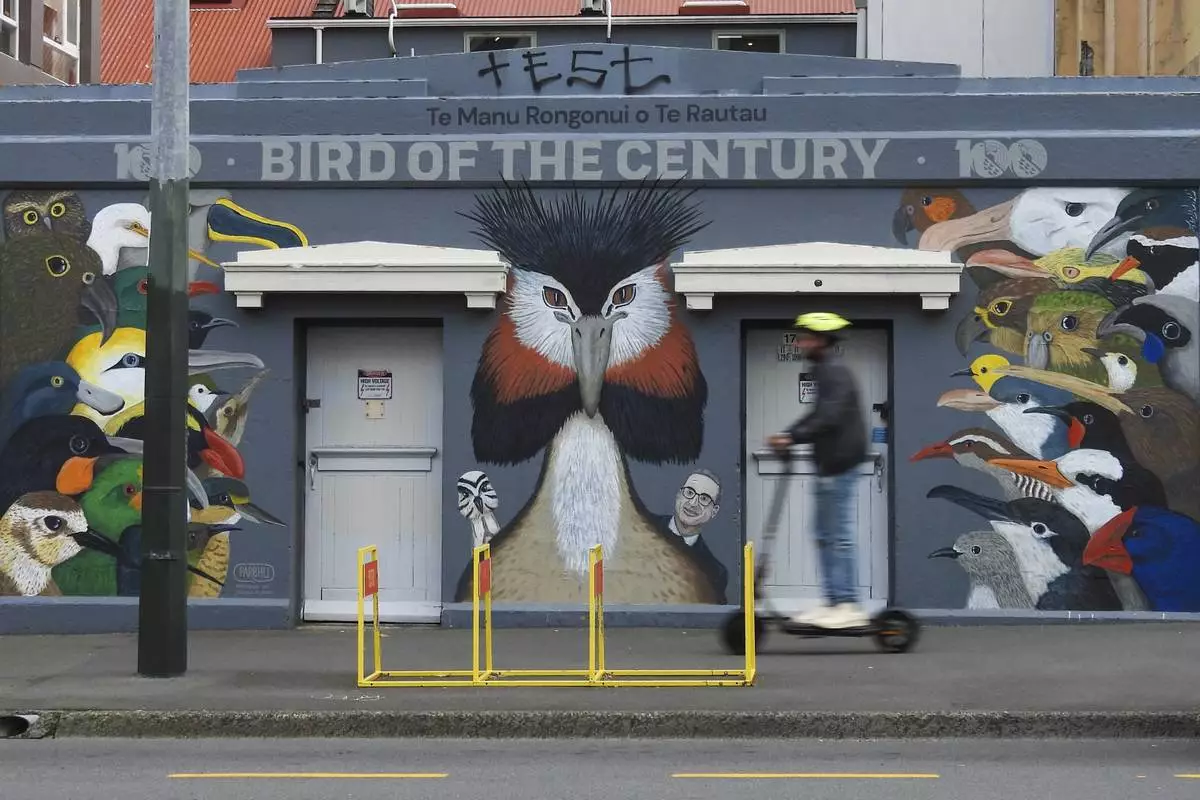
A man rides past a mural celebrating John Oliver's New Zealand's 2023 Bird of the Year campaign in Wellington, New Zealand, Sunday, Sept. 15, 2024. (AP Photo/Charlotte GrahamMcLay)
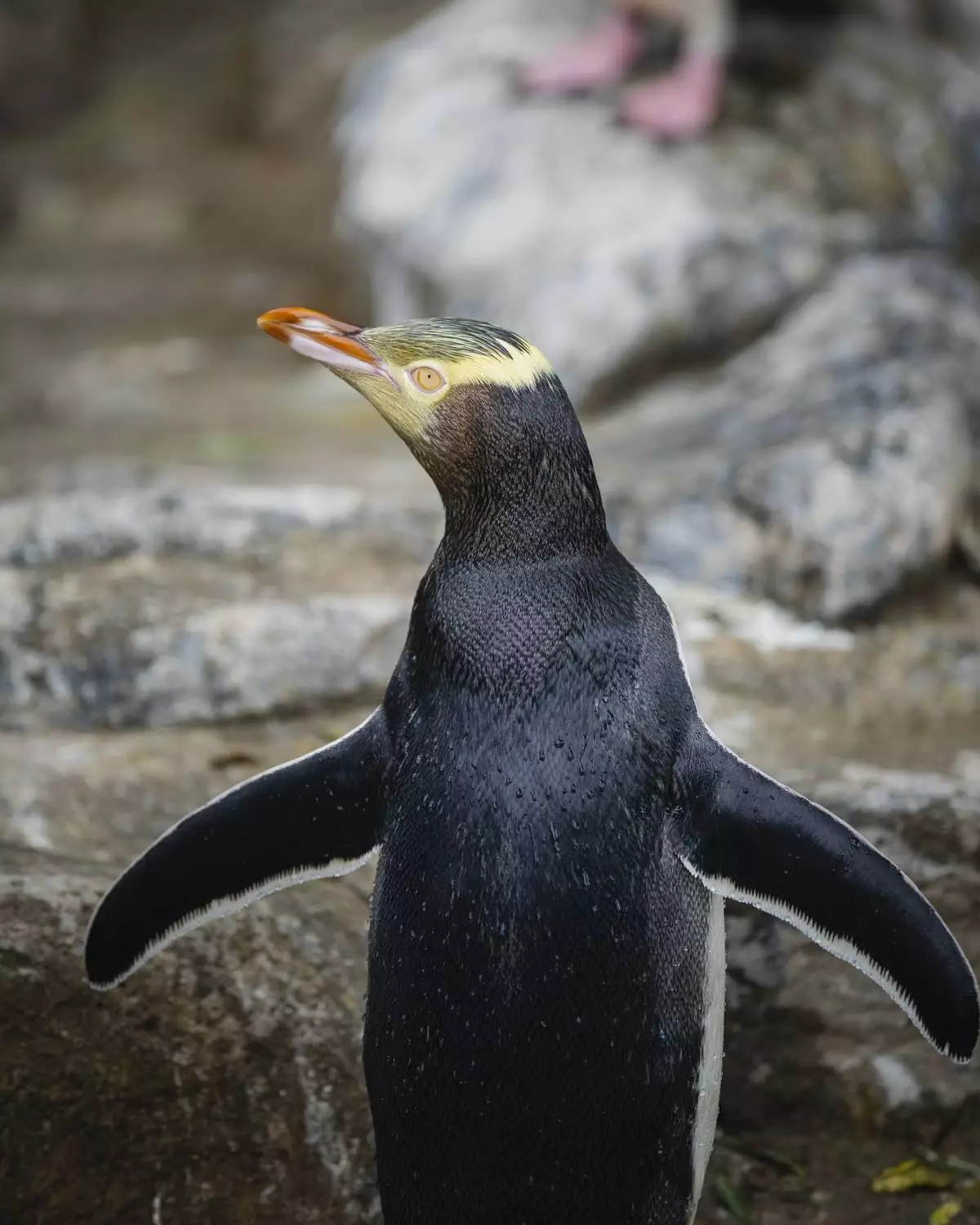
A hoiho or yellow-eyed penguin pictured on April 2, 2023, has won New Zealand's annual Bird of the Year vote, Monday, Sept. 16, 2024, after a fierce contest absent the foreign interference and controversies that have upset the country's avian elections before. (Hayden Parsons via AP)
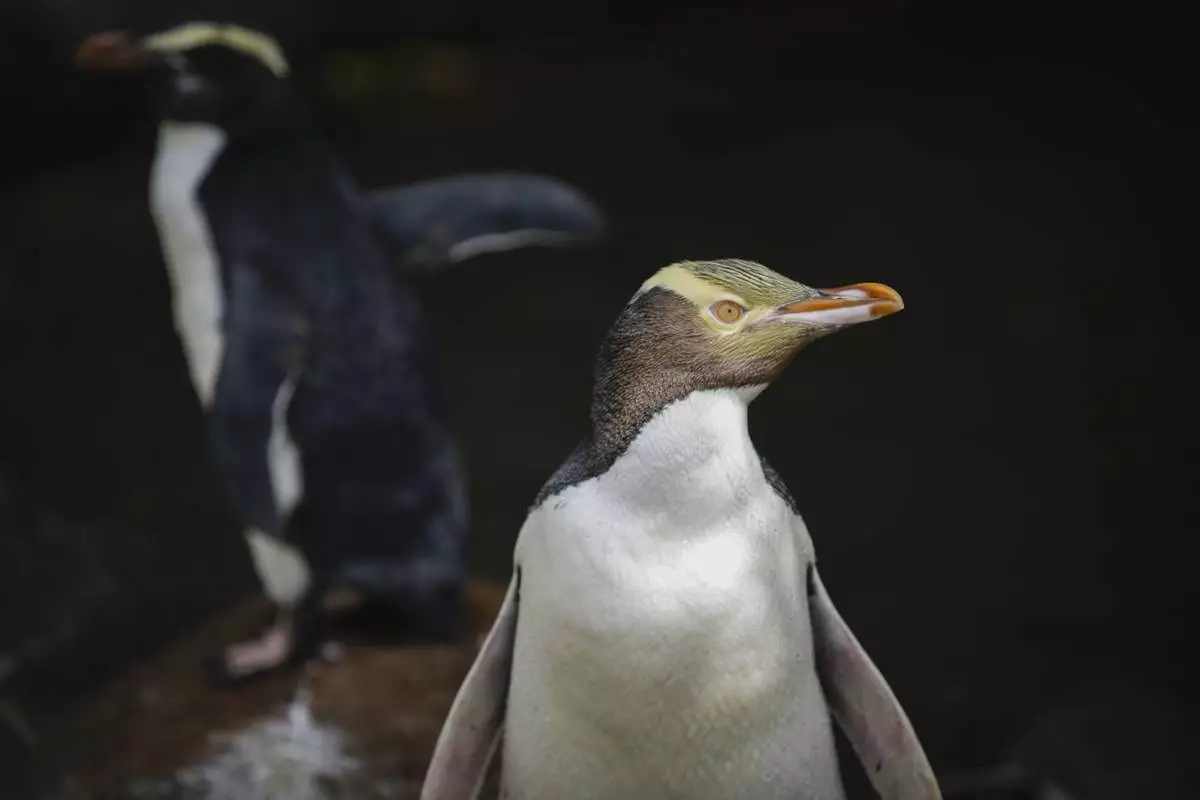
A hoiho or yellow-eyed penguin pictured on April 2, 2023, has won New Zealand's annual Bird of the Year vote, Monday, Sept. 16, 2024, after a fierce contest absent the foreign interference and controversies that have upset the country's avian elections before. (Hayden Parsons via AP)
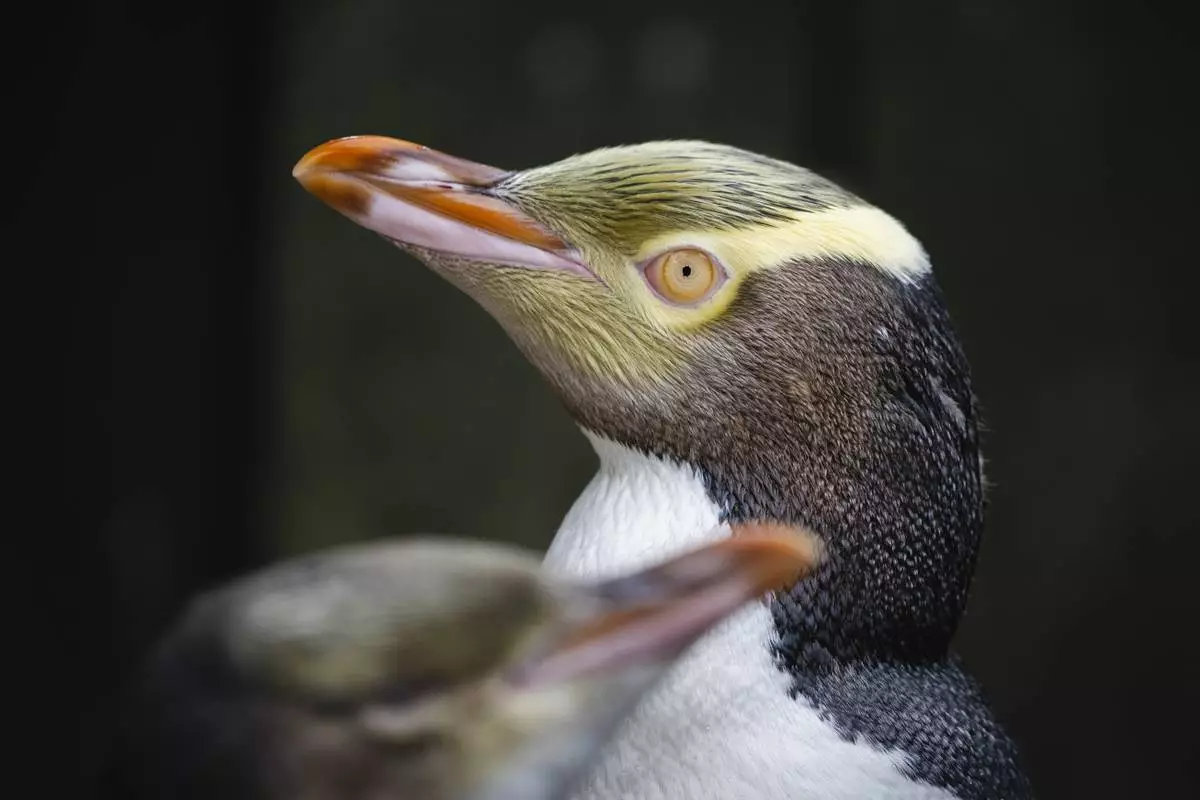
A hoiho or yellow-eyed penguin pictured on April 2, 2023, has won New Zealand's annual Bird of the Year vote, Monday, Sept. 16, 2024, after a fierce contest absent the foreign interference and controversies that have upset the country's avian elections before. (Hayden Parsons via AP)
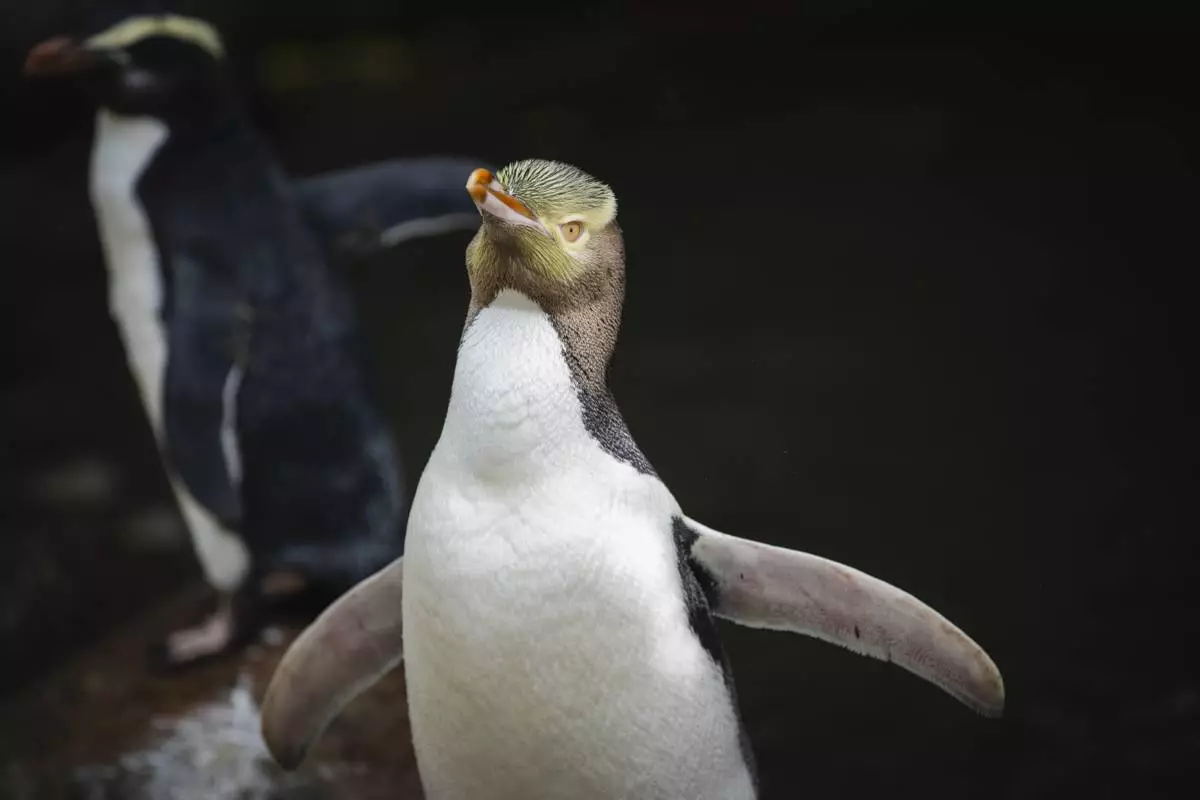
A hoiho or yellow-eyed penguin pictured on April 2, 2023, has won New Zealand's annual Bird of the Year vote, Monday, Sept. 16, 2024, after a fierce contest absent the foreign interference and controversies that have upset the country's avian elections before. (Hayden Parsons via AP)





